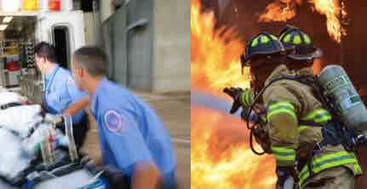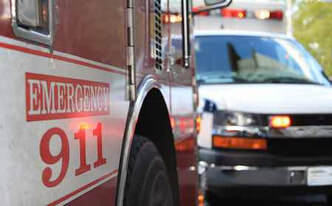
As a first responder, you serve your community, save lives, and protect property. First responder discounts are a small but meaningful way companies say thank you to the heroes who serve their communities. You probably know about big-name programs like Nike or Verizon, but what about the hidden gems?
From travel deals to home improvement perks, there are tons of lesser-known discounts waiting to be discovered — if you know where to look. Here’s how to uncover them:
1. Visit Us at BadgeDiscounts.com & Follow Us on Social Media
The first and most obvious way (lol) to find hidden first responder discounts is to visit our website. We update our website quarterly by adding new discounts and checking all information to make sure it is current. We list over 450 first responder discounts in an easy to use format broken down into 20 different categories. Our site includes:
- local discounts
- national discounts
- discounts offered with organizations' memberships
- and places first responders are eligible for a "government rate"
You can also follow us on our social media pages. We are constantly posting new and limited time first responder discounts, updates to our website, and more. You can find us on:
- Facebook: facebook.com/BadgeDiscounts
- X: x.com/badgediscounts
- Pinterest: pinterest.com/badgediscounts
- Instagram: instagram.com/badgediscounts1
- Reddit: reddit.com/r/BadgeDiscounts
2. Verification Platforms
Most first responder discounts are verified through secure third-party services. These platforms often list exclusive offers not advertised elsewhere:
Used by hundreds of major brands.
- Check out the ID.me “First Responder Discounts” page — it includes travel, apparel, and electronics deals you won’t find just by Googling.
- Once verified, you can reuse your ID for other brands instantly.
- Some companies partner only with SheerID (like Lowe’s or Columbia Sportswear).
- Visit their exclusive deals directory and filter by “First Responders.”
Known for smaller, niche brands like Reebok, OtterBox, and tactical gear shops.
- Signing up once gives you ongoing access to rotating offers.
Pro Tip: Create accounts with all three — you’ll uncover more options and get notified about new deals automatically.
3. Check Brand Websites
(Look for the Fine Print) Many companies don’t advertise their first responder discounts publicly — they tuck them away in FAQ pages, footer links, or checkout screens.
Try searching Google for:
“site:[brandname].com first responder discount”
You’ll often find hidden pages that don’t appear in main menus.
4. Look Beyond Retail
Explore Service DiscountsIt’s not just clothing or gear. First responders can save on:
- Travel: Delta, Southwest, and Hilton occasionally offer special rates through ID.me.
- Insurance: Companies like GEICO and Liberty Mutual provide exclusive pricing for emergency personnel.
- Phone Plans: Verizon, AT&T, and T-Mobile offer up to 25% off monthly bills.
- Fitness: Peloton, 24 Hour Fitness, and Oura Ring all have first responder offers.
Always check for seasonal promotions around National Police Week, Fire Prevention Week, or 9/11 — brands tend to boost offers during these times.
5. Join First Responder Communities and Forums
Online communities are goldmines for hidden discounts.
Check out:
- Facebook Groups: “First Responder Discounts and Freebies” or “Law Enforcement Deals.”
- Reddit: Subreddits like r/Firefighting or r/EMT often share unlisted discount codes.
- Nonprofit Resources: Organizations like ResponderStrong or National Volunteer Fire Council occasionally post brand partnerships.
6. Subscribe to Brand Emails
Some discounts are invite-only or sent through email to verified users.
After verifying your first responder status, join the brand’s newsletter or create an online account — that’s often how they deliver private promo codes.
Example: Under Armour sends extra 10–15% off codes to verified responders before big sales like Black Friday or Memorial Day.
7. Don’t Forget Local Businesses
Your community likely has local companies that offer deals but never promote them online.
- Ask at checkout — “Do you offer a first responder discount?”
- Check local chambers of commerce or union newsletters.
- Restaurants, auto repair shops, and small gyms often give 10–20% off just for asking.
Final Thoughts: Finding hidden first responder discounts takes a bit of digging, but the rewards are worth it. Between national programs and local offers, you could save hundreds of dollars a year — all while being recognized for your service. Whether you’re shopping for gear, planning a trip, or upgrading your tech, take a few extra minutes to check for hidden discounts. You’ve earned them.



